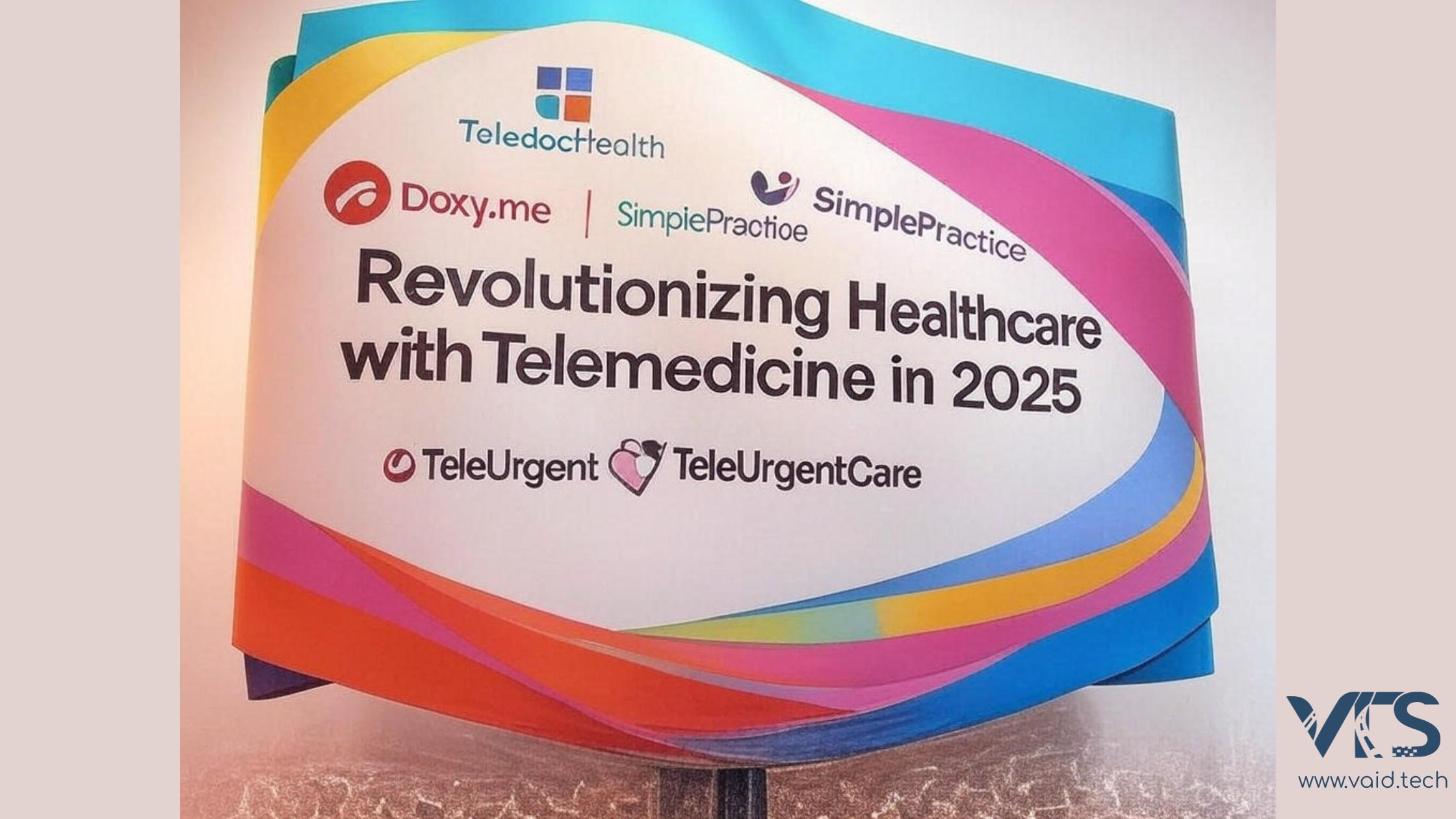The rise of telemedicine promised a new era of accessible healthcare, especially after the COVID-19 pandemic accelerated digital health adoption. Yet, many startups and clinics find themselves asking: "Why isn’t my telemedicine platform attracting patients?"
You’ve built the app. You’ve hired doctors. Maybe you’ve even run some ads. Still, your user count is stuck or dropping. If this sounds familiar, you’re not alone—and the problem often lies in marketing missteps and tech oversights.
In this article, we'll explore the top marketing and technical reasons why your telemedicine solution may be struggling to get traction—and how to fix them.
Most of them are from our experiences from different clients that we vaid tech services have worked with.
🧭 1. Poor Understanding of Target Audience
Marketing Mistake #1: Not knowing who you're building for.
Many telemedicine platforms try to serve everyone, and end up serving no one. Whether it's seniors needing chronic care or millennials looking for quick mental health support, different demographics require different marketing messages, UI experiences, and tech features.
Solution:
- Create user personas based on age, location, needs (e.g., urgent care, psychiatry), and tech savviness.
- Use surveys, interviews, and Google Trends to understand search behavior.
- Tailor your content marketing and features to one clear niche first before expanding.
💡 2. Weak Value Proposition
Marketing Mistake #2: You’re not telling people why they should use your service.
If your homepage says, “We provide online doctor consultations,” so do a thousand others. Your platform must clearly answer:
Why should someone choose you over their current provider, urgent care, or competitors?
Solution:
- Emphasize your USP (Unique Selling Proposition): 24/7 access? Cheaper? Specialty care? Multilingual doctors?
- Feature real testimonials, video demos, and outcome-based statistics.
- Use clear, benefit-driven CTAs (e.g., “Get treated in under 10 minutes” instead of “Sign up now”).
🏚 3. Poor User Experience and Onboarding
Tech Mistake #1: Your app or site is hard to use.
Telemedicine users often include elderly patients, people in a hurry, or those not tech-savvy. A clunky interface, slow loading times, or confusing onboarding can drive users away before they even see a doctor.
Common UX Issues:
- Overwhelming sign-up process
- Hidden pricing or confusing appointment booking
- No live chat/help support
Solution:
- Simplify onboarding to 3 steps or fewer.
- Conduct usability testing with real users, not just developers.
- Ensure your app is mobile-optimized—most telehealth traffic is mobile.
🔍 4. No Search Engine Visibility (Poor SEO)
Marketing Mistake #3: If you're not on the first page of Google, you might as well not exist.
Telehealth patients often begin their journey on Google, searching things like:
- “Online doctor for sore throat”
- “Talk to a therapist now”
- “Pediatrician telehealth near me”
If your site doesn't rank for these, you're losing free, high-intent traffic.
Solution:
- Invest in keyword research and create SEO-optimized blog content.
- Target local keywords (e.g., “telemedicine New York”).
- Set up Google My Business if applicable.
- Optimize your page load speed and mobile friendliness.
📱 5. Weak Mobile App Performance
Tech Mistake #2: Your app isn’t stable or doesn’t function well across devices.
A common reason why users uninstall health apps: crashes, bugs, or login issues. This is especially fatal for telemedicine platforms where reliability is expected.
Symptoms:
- Long loading times during calls
- Video/audio sync issues
- Failed prescriptions or appointment bookings
Solution:
- Conduct regular QA testing across iOS, Android, tablets, and desktop.
- Use monitoring tools like Firebase, Sentry, or Crashlytics to catch real-time errors.
- Don’t ignore user reviews—they’re gold mines for bugs and usability fixes.
📉 6. Ineffective Paid Advertising
Marketing Mistake #4: Running Google or Facebook Ads with no strategy.
Throwing money at ads without targeting or proper tracking leads to wasted budget. Many healthtech founders boost posts or run Google Ads with broad keywords like “doctor online”—competing against industry giants like Teladoc or Zocdoc.
Solution:
- Focus on long-tail keywords (e.g., “female telehealth doctor for PCOS in Texas”).
- Run A/B tests on ad copy, creatives, and landing pages.
- Use conversion tracking to measure not just clicks, but appointments booked.
🧾 7. No Content Marketing Strategy
Marketing Mistake #5: You're not creating value through content.
Patients don’t wake up wanting to “book a telehealth appointment.” They search for symptoms, solutions, and advice. If you’re not showing up with answers, you're missing a trust-building opportunity.
Solution:
- Start a blog answering common health questions.
- Use YouTube, TikTok, or Instagram to share short videos from real doctors.
- Publish “how-to” content: “How to prepare for your first online consultation”, “5 reasons to try teletherapy”.
Bonus: These can all be repurposed into email campaigns and SEO-optimized landing pages.
🧊 8. No Trust Signals
Tech/Marketing Mistake #6: Patients are hesitant to trust you with their health—and your site doesn’t reassure them.
If you lack credibility indicators, patients will hesitate.
Trust Killers:
- No visible doctor credentials
- No reviews or ratings
- No mention of data privacy or HIPAA compliance
Solution:
- Highlight doctor qualifications and real names/photos.
- Show security badges, HIPAA/GDPR compliance, and patient privacy policies.
- Include video testimonials, Trustpilot badges, or case studies.
🔄 9. Lack of Retargeting and CRM Follow-Up
Marketing Mistake #6: Patients visit once and never return.
If someone landed on your site but didn’t book, do you follow up? Do you run retargeting ads? Send reminders?
Solution:
- Set up Facebook Pixel and Google retargeting ads.
- Use email flows: welcome series, follow-ups, seasonal health tips.
- Offer discounts or free consultations to first-time users.
🧯 10. Tech Stack Not Scalable or Secure
Tech Mistake #3: Your backend can’t scale, and your platform might not be safe.
Many telemedicine apps are built quickly with MVP tools, which is fine to start—but bad architecture can break as traffic grows or legal regulations tighten.
Red Flags:
- Unsecured video conferencing
- No audit logs or data backups
- Inability to integrate with EHR systems
Solution:
- Use secure video SDKs like Twilio, Daily, or Vonage.
- Ensure compliance with HIPAA (US), PIPEDA (Canada), or GDPR (Europe).
- Choose cloud-based, scalable infrastructure (AWS, Azure, or GCP).
🎯 Final Thoughts: Getting Patients Is a System, Not a Feature
Success in telemedicine isn’t just about launching a product—it’s about continuous improvement across marketing, tech, and trust. Patients need to find you, trust you, and enjoy using your platform enough to return.
If you're not getting customers, ask:
- Are we easy to find online?
- Is our message clear and differentiated?
- Is the tech experience seamless?
- Are we nurturing leads and building trust?
Fixing just one or two of these mistakes can dramatically improve your customer acquisition and retention. The future of healthcare is digital—but only for those who market and build it right.


